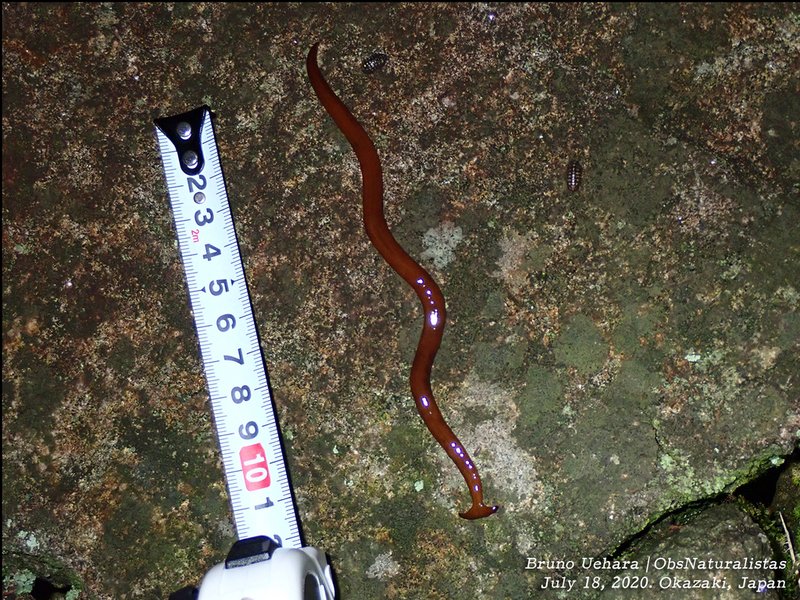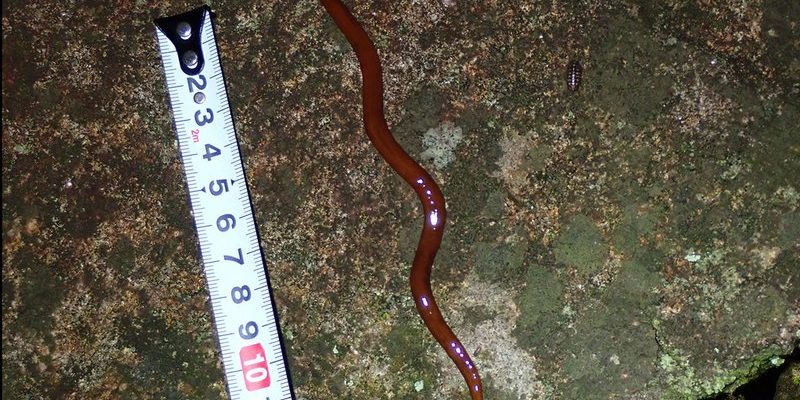
Hammerhead worms are nocturnal hunters, meaning they are mostly active at night, prowling for prey like earthworms and slugs. During the day, however, they tend to go incognito, seeking refuge in various hiding spots. This is key to understanding their survival tactics and how they fit into the ecosystem. So, if you’re curious about where these worms spend their daylight hours and why it matters, grab a cup of coffee, and let’s dive in!
Understanding Hammerhead Worms
Hammerhead worms belong to the group of flatworms known as planarians. They are distinctly recognized by their flattened bodies and the wide, spatula-shaped heads that give them their namesake appearance. These worms can be found in various regions around the world, particularly in tropical and subtropical climates.
Interestingly, hammerhead worms are not just any ordinary flatworms. They possess unique characteristics, such as the ability to regenerate lost body parts, which is something of a party trick in the worm world. If you cut one in half, it can regenerate two new worms! This fascinating ability makes them resilient but also contributes to questions about their population control and impact on local ecosystems.
You might be wondering, why are they important? Hammerhead worms play a role in controlling the numbers of other organisms, particularly earthworms, which can affect soil health and nutrient distribution. So, even though they might seem a bit strange, they’re quite significant in their environments.
Hiding Spots in Nature
So, where do hammerhead worms hide during the day? They are crafty little creatures that prefer dark, damp places. Think of them as the introverts of the worm world, sneaking away to avoid the hustle and bustle of daylight activity. Here are some common hiding spots you might find them in:
- Under Rocks: Hammerhead worms love to burrow under rocks or stones. These places provide the perfect cover from predators and the harsh sunlight.
- In Leaf Litter: A pile of leaves is another favored hiding spot. Leaf litter creates a moist environment that helps keep them hydrated, which is essential since they can dry out quickly in the sun.
- In the Soil: They often dig into the soil. Its richness allows them to stay hidden while also being close to their prey, like earthworms.
These spots not only protect them from the sun but also keep them safe from predators looking for a wormy snack. The combination of darkness and moistness is crucial for their survival.
The Role of Moisture
Moisture plays a vital role in hammerhead worms’ lives. These worms are more than just strange-looking; they require a humid environment to thrive. Their skin is soft and needs to stay moist to help with respiration. When the sun is out, the risk of drying out increases, which is why they avoid the light.
Many species of hammerhead worms can be found in tropical rainforests or areas with high humidity levels. This raises another question: how do they maintain hydration when hiding? They often curl up to reduce moisture loss, which is quite the smart move.
Keeping moisture is essential for them, especially when they are inactive during the day. If they find themselves in dry conditions, they can become sluggish and, in extreme cases, may die. By hiding in damp areas, they ensure they can stay hydrated until night falls, and it’s time to hunt again.
Nighttime Activity
Once night rolls around, hammerhead worms become more active. They leave their hiding spots and are on the prowl for food. Their diet primarily consists of earthworms, and they have a unique way of capturing their prey. The hammerhead worm uses a special enzyme to break down their food, allowing them to absorb nutrients directly through their skin.
It’s interesting to note how their nighttime behavior contrasts sharply with their daytime hiding habits. While they may appear to be simple creatures, they have complex behavior patterns that help them survive. This shift in activity also provides a fascinating glimpse into how various creatures interact with their environment.
The transition from day to night is crucial for hammerhead worms, marking the shift from hiding to hunting. Understanding this dynamic can help us appreciate their role in the ecosystem even more.
Predators and Threats
Like all creatures, hammerhead worms face their share of predators. Birds, small mammals, and even other worms can pose a threat to these elusive critters. Their ability to remain hidden during the day is a crucial survival tactic. But it’s not all doom and gloom; hammerhead worms also have some defense mechanisms to protect themselves.
For example, if a predator gets too close, hammerhead worms can release a type of slime that is unpleasant tasting. This can deter would-be hunters and give them a chance to escape and hide again.
It’s essential to recognize that while they’re a part of the food chain, they also contribute to the health of the ecosystem. As pests in the garden, they can sometimes cause issues, but they play a vital role in maintaining balance.
Common Misconceptions
When it comes to hammerhead worms, there are a few common misconceptions that often pop up. One of the biggest is that all flatworms are harmful or dangerous. While some species can be predatory, hammerhead worms are mainly harmless to humans and pets.
Another misconception is that they are invasive everywhere they go. While they can spread in certain environments, it’s not accurate to say they threaten ecosystems everywhere. Understanding their behavior and habitats is essential for managing their populations without unnecessary panic.
People often mix them up with similar-looking creatures, too. For example, the common earthworm is quite different from the hammerhead worm, and knowing these distinctions can help in recognizing their ecological roles better.
Hammerhead worms are not just bizarre; they’re complex little creatures that play an essential part in the ecosystem. Their quirky habits, especially hiding during the day, are all about survival. By finding damp and dark places to stay out of sight, they keep hydrated and safe from the sun and predators.
So the next time you spot a hammerhead worm, remember its secretive lifestyle. Although we might not see them during the day, they’re busy doing their job of keeping the balance in nature. Now, you’re equipped with a better understanding of where these unique worms hide and why it’s important. Isn’t nature wild?

